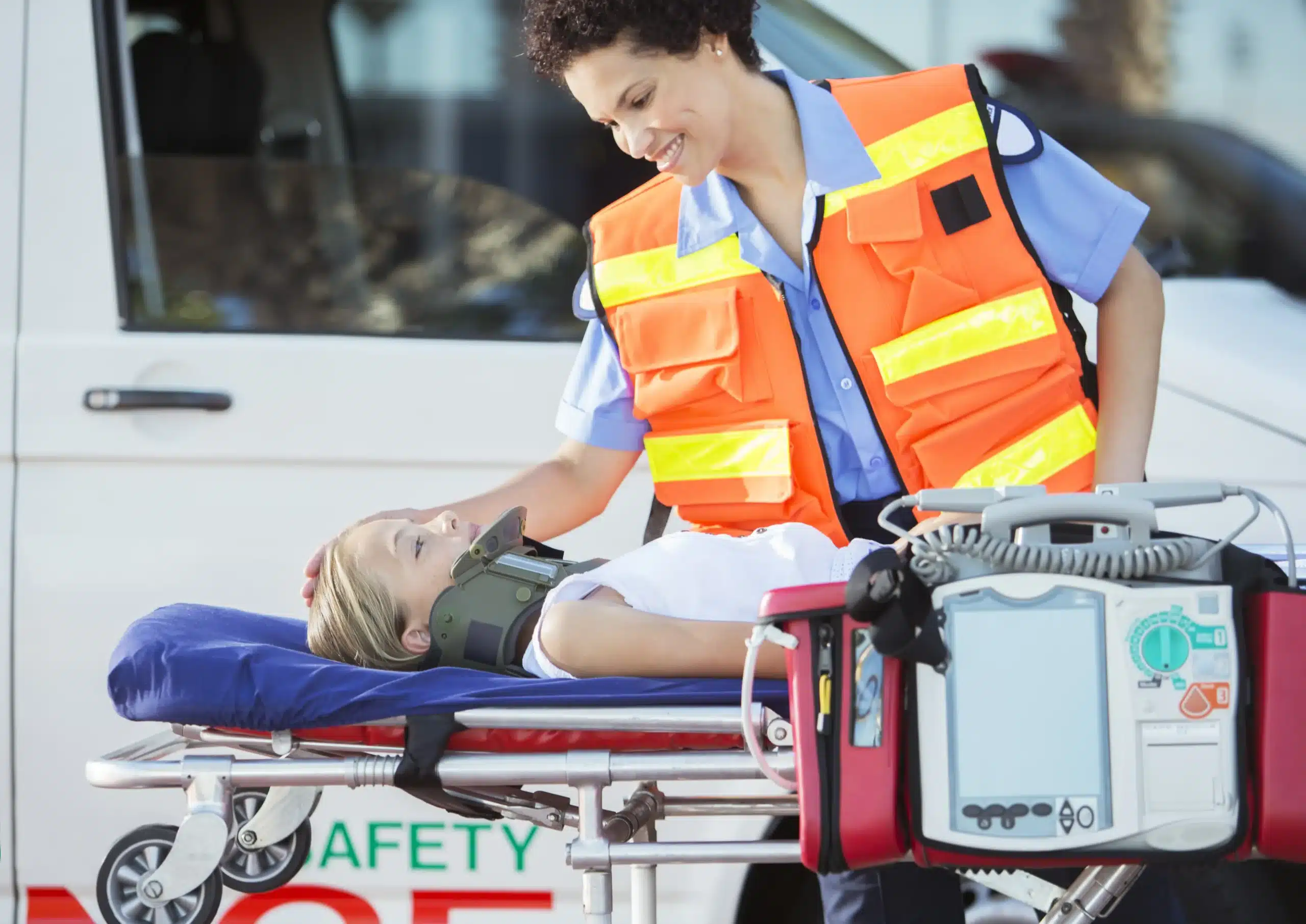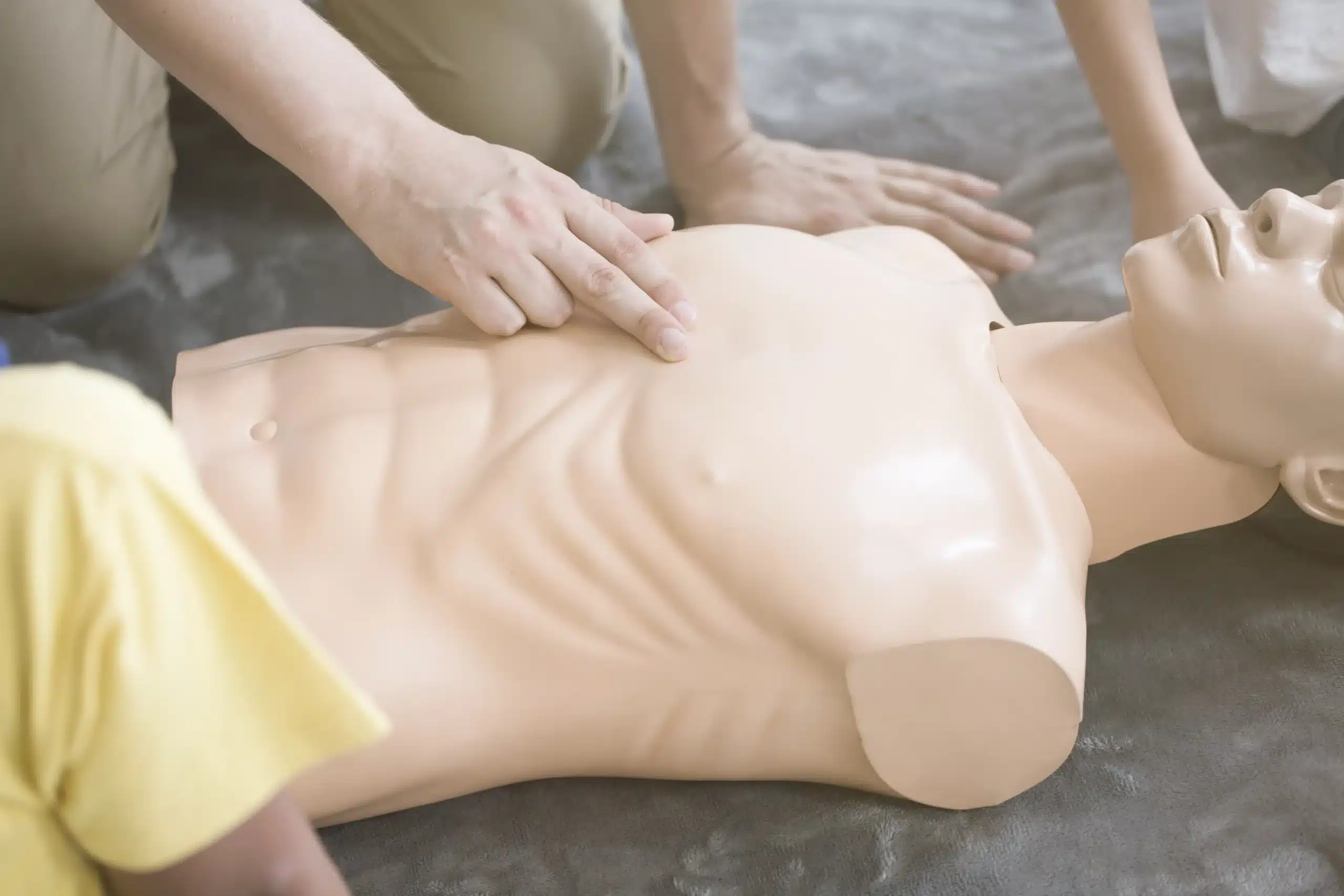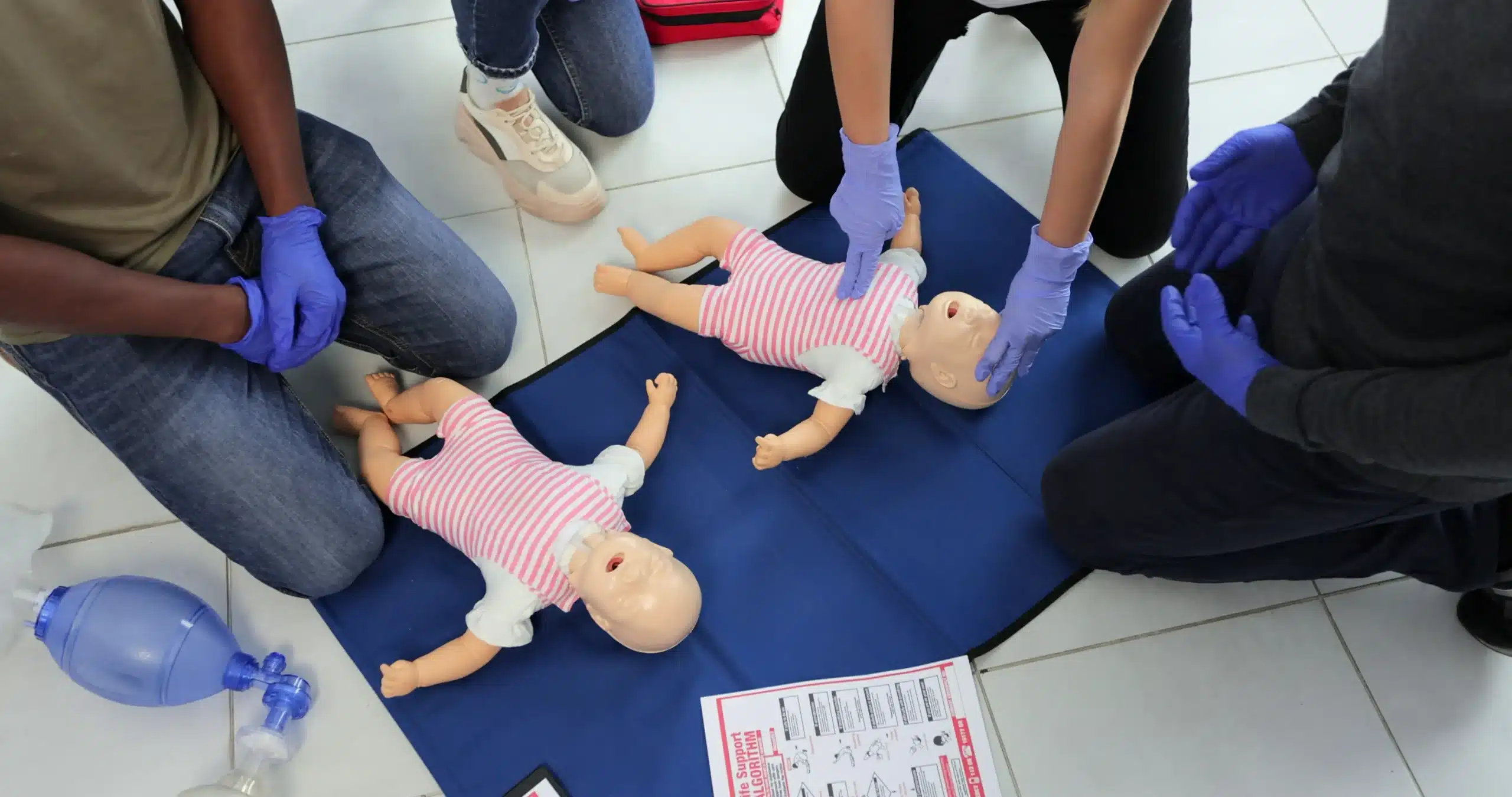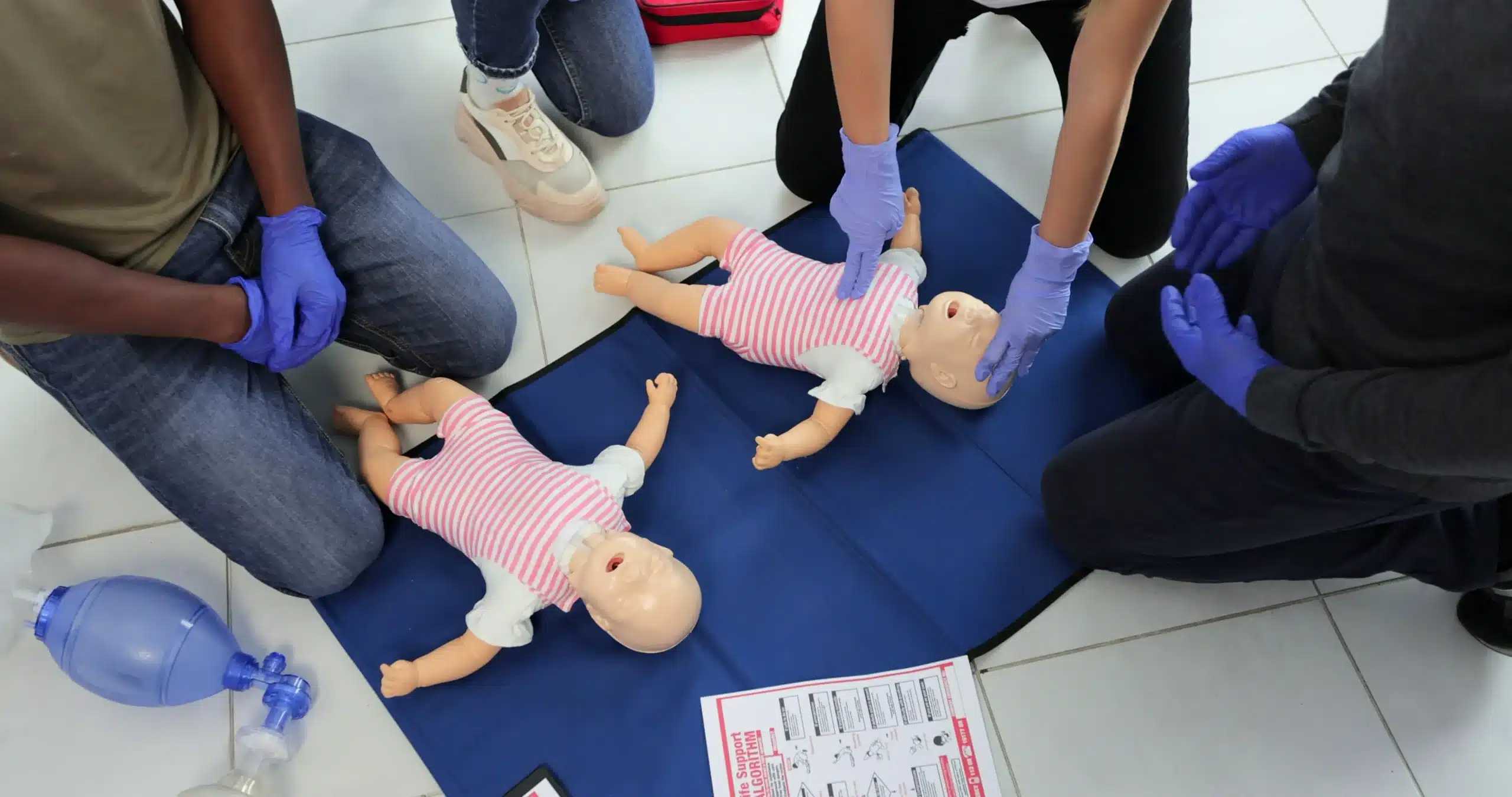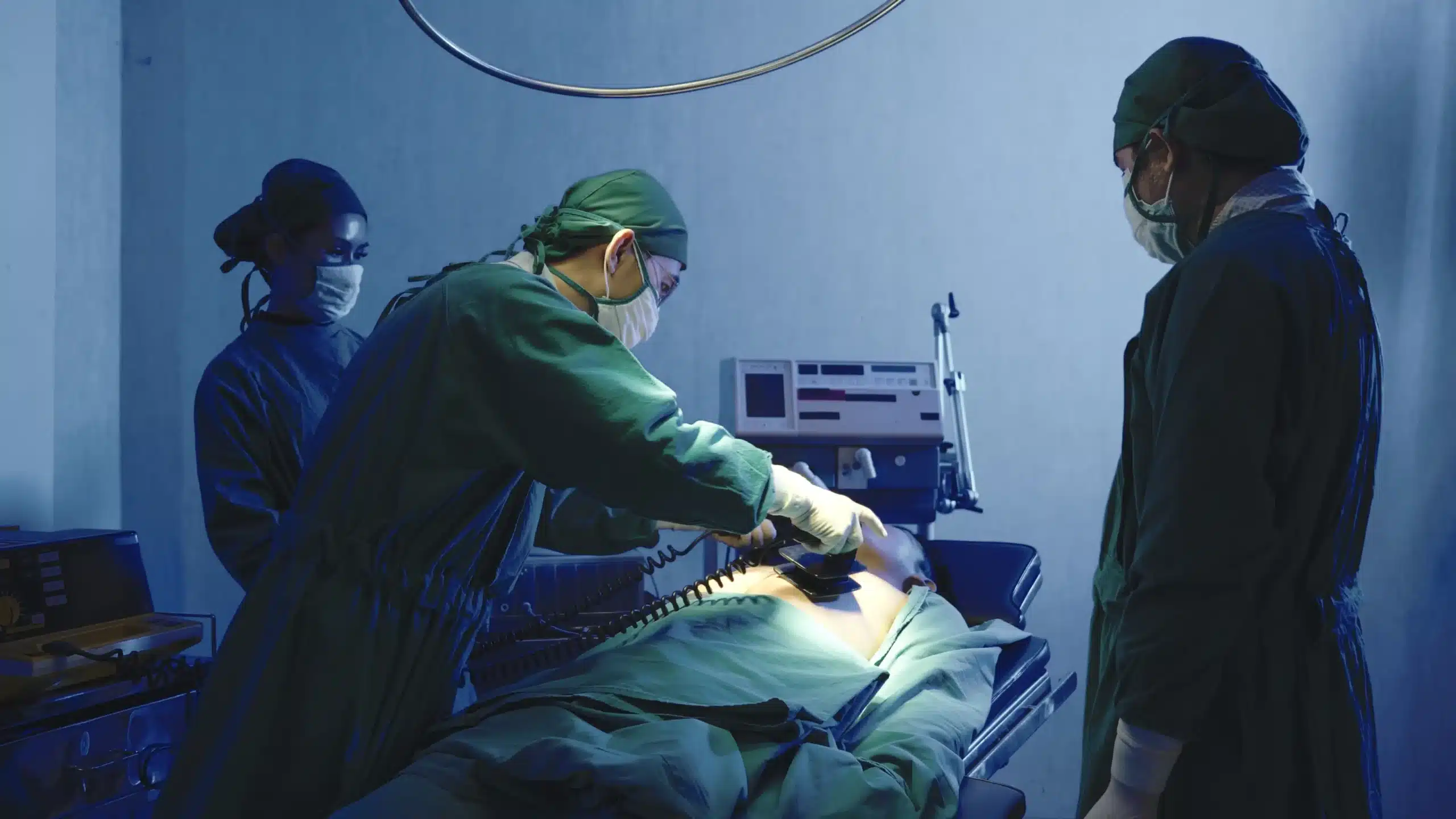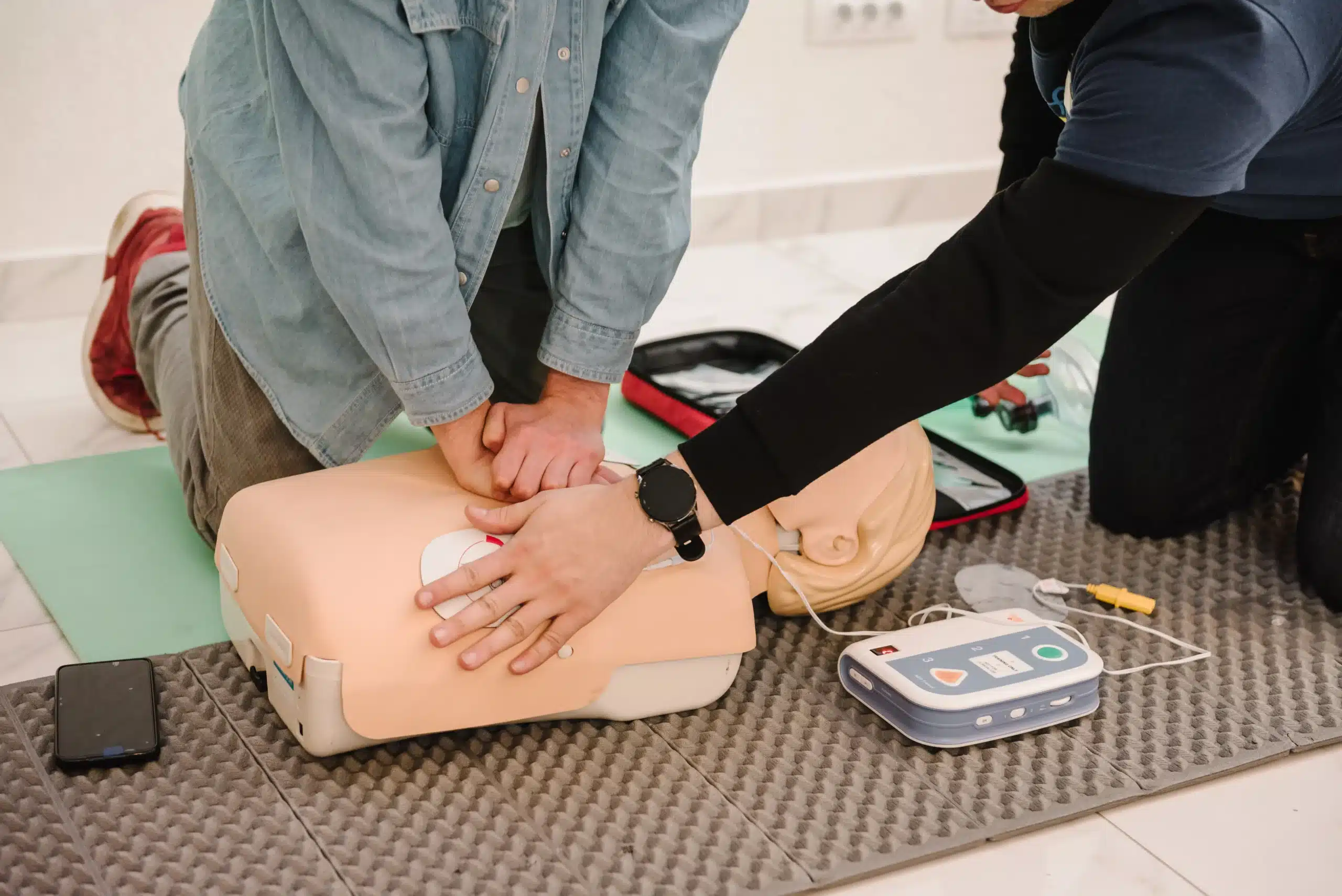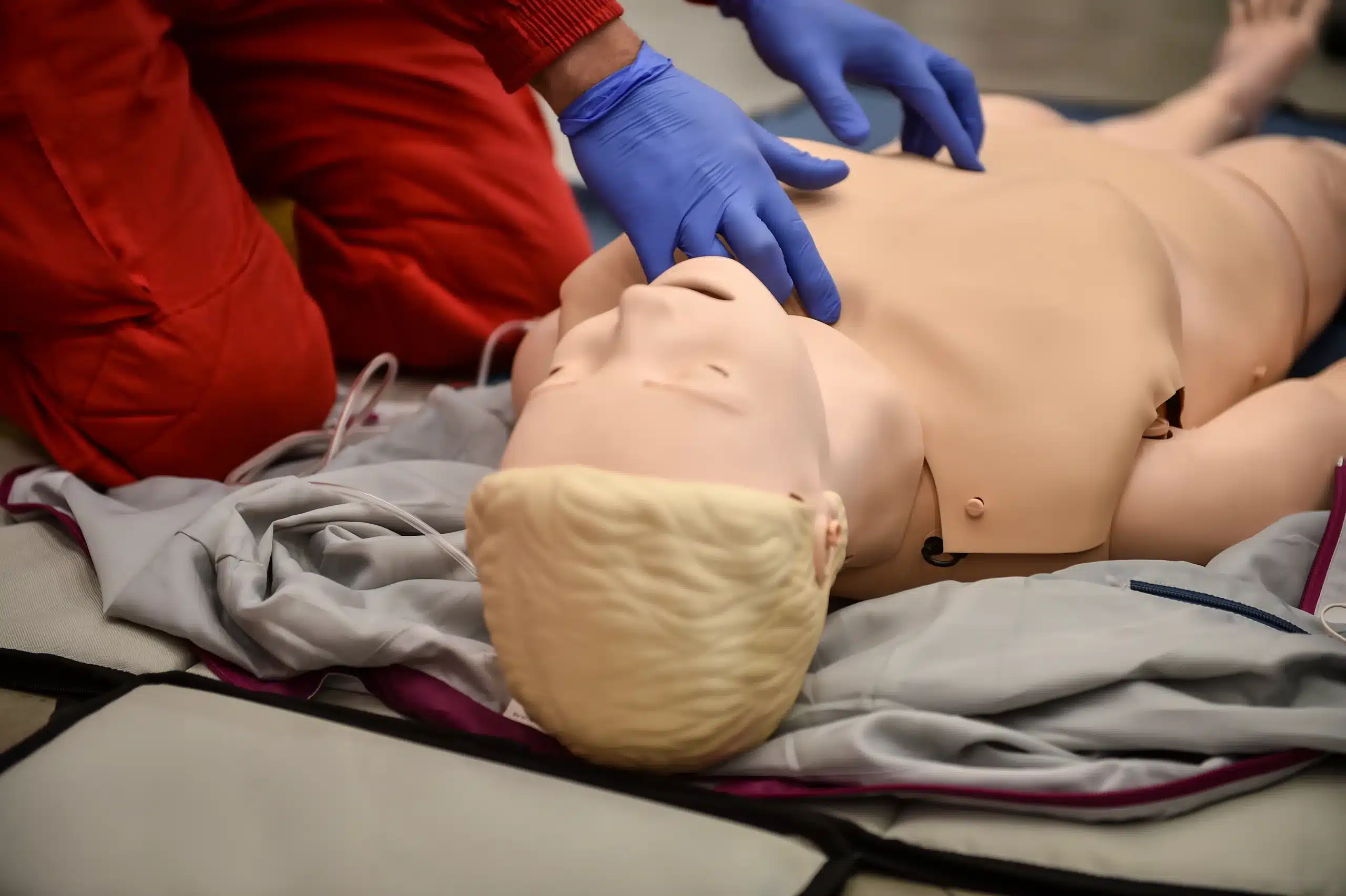Seconds can feel like an eternity when someone’s life hangs in the balance. During a medical emergency, knowing CPR can be the difference between tragedy and survival. In Alameda, we value our neighbors and community, and being prepared for emergencies is part of that value system. This is why CPR certification is a skill everyone should have in Alameda. This article will guide you through the process of getting certified, addressing common concerns, and highlighting the profound impact CPR training can have on individuals and our community. We’ll explore the importance of CPR, the steps involved in getting certified, and how you can become a vital link in the chain of survival.
Key Takeaways
- CPR can save lives: Learning CPR equips you to respond effectively during cardiac arrest, significantly improving the chances of survival until professional help arrives.
- Certification is accessible and convenient: Various CPR training centers in Alameda offer flexible schedules and affordable courses, making it easy to fit certification into your busy life.
- Become a community lifesaver: Getting CPR certified empowers you to make a difference, contributing to a safer and more prepared community in Alameda.
What is CPR?
What is CPR and how does it work?
CPR stands for cardiopulmonary resuscitation. It’s a lifesaving technique used when someone’s breathing or heartbeat has stopped. This can happen after a heart attack, drowning, or other medical emergencies. CPR involves chest compressions and rescue breaths, which help circulate blood and oxygen to the brain and other vital organs. There are two main types of CPR: Hands-Only CPR (chest compressions only) and Full CPR (chest compressions and rescue breaths). Hands-Only CPR is often recommended for untrained bystanders and is highly effective in many situations. For healthcare providers and those seeking more comprehensive training, learning Full CPR is essential. CPR doesn’t restart the heart, but it maintains a minimal level of blood flow to the brain and other organs. This can prevent irreversible damage and significantly increase the person’s chances of survival until professional medical help arrives. Learning and practicing CPR can give you the confidence to act quickly in a crisis.
Why act fast in cardiac emergencies?
When someone experiences cardiac arrest, every second counts. Hundreds of thousands of out-of-hospital cardiac arrests occur each year in the US, and the survival rate is often low. Immediate CPR can dramatically increase the odds of survival. CPR helps delay brain damage by maintaining some blood flow, giving emergency responders more time to arrive and provide advanced care. The faster CPR is started, the better the chances of a positive outcome. Every minute without CPR decreases the chances of survival, so acting quickly is paramount. Learning CPR empowers you to make a real difference in a life-or-death situation.
Why Get CPR Certified in Alameda?
Knowing CPR can make you a vital link in the chain of survival. It empowers you to act quickly and confidently during medical emergencies, potentially saving a life. But why is getting certified in Alameda specifically so important?
Local cardiac arrest statistics and survival rates
Cardiac arrest can happen anywhere, anytime. In the US, about 350,000 out-of-hospital cardiac arrests occur each year, with a survival rate hovering around 10%. The American Heart Association states that performing CPR immediately can drastically improve those odds, potentially increasing them to as much as 45%. While we don’t have Alameda-specific statistics readily available, these national figures highlight the importance of being prepared for such emergencies in our community. Learning CPR equips you with the skills to respond effectively, bridging the gap before professional medical help arrives. Approximately half a million cardiac arrests occur each year, and bystander CPR can double or triple the chance of survival.
How CPR certification helps our community
CPR certification isn’t just about acquiring a skill; it’s about contributing to a safer Alameda. Currently, fewer than half of cardiac arrest victims receive immediate help from bystanders. By becoming CPR certified, you join a network of trained individuals ready to assist in such critical situations. This strengthens our community’s resilience and increases the chances of positive outcomes during medical emergencies. CPR training provides you with the technical skills to perform chest compressions and rescue breaths, and also instills the confidence to act decisively under pressure. It fosters a sense of responsibility and empowers individuals to take charge during emergencies, potentially making a life-saving difference. CPR and First Aid classes are readily available in Alameda, making it easier than ever to acquire these essential skills.
Who Needs CPR Certification?
CPR certification isn’t just for doctors and nurses—it’s a valuable skill for everyone. Knowing CPR can empower you to respond effectively during emergencies, potentially saving a life. Let’s explore who can benefit from CPR training.
Healthcare Professionals and First Responders
For healthcare providers and first responders, CPR certification is often a job requirement and essential for providing high-quality care in critical situations. These professionals are on the front lines of medical emergencies, so their ability to perform CPR quickly and correctly is crucial. Safety Training Seminars offers American Heart Association courses like BLS, ACLS, and PALS, designed to equip these professionals with the advanced life support skills they need.
Parents, Teachers, and Caregivers
Parents, teachers, and caregivers are entrusted with the well-being of children and other vulnerable individuals. CPR and First Aid certification gives them the confidence to handle unexpected medical situations, from choking incidents to sudden cardiac arrest. Knowing CPR can make all the difference. Alameda CPR Classes offers combined CPR and First Aid certification, making it convenient for busy caregivers to gain these essential skills.
Workplace Safety and Public Events
Workplaces and public gatherings benefit significantly from having CPR-certified individuals present. In the event of a medical emergency, these trained individuals can step in before professional help arrives. This immediate response can dramatically improve the outcome. Remember, CPR and First-aid training isn’t a one-time thing; it’s an ongoing commitment to safety. Regular refresher courses ensure your skills stay sharp. Consider encouraging CPR certification within your workplace or community group to create a safer environment for everyone. Learn more about CPR classes in Alameda.
When Do You Need CPR?
CPR isn’t just for medical professionals—it’s a life skill everyone can and should learn. Knowing CPR empowers you to respond effectively in various emergencies, giving you the confidence to act when seconds count. Let’s explore some real-life scenarios where CPR knowledge becomes invaluable.
Home Emergencies
Cardiac arrest can happen anywhere, but it most often occurs at home. This means the people you love are the ones most likely to need your help. Being CPR-certified allows you to provide immediate assistance to family members—children, parents, grandparents—in the crucial moments before professional help arrives. As Alameda CPR Classes points out, “Most cardiac arrests occur at home, emphasizing the need for bystander intervention.” Your quick actions can significantly impact their chances of survival.
Helping Strangers
Imagine witnessing someone collapse in a public place. Would you know what to do? CPR certification equips you to assist strangers in need. Whether it’s a medical emergency on the street, in a restaurant, or at a community event, your training can make all the difference. CPR “is a vital skill that can double or triple a person’s chance of survival during a cardiac arrest.” By stepping up, you become a vital link in the chain of survival.
Workplace Incidents
CPR training is essential for creating safer workplaces. From choking incidents in the cafeteria to sudden cardiac events during a meeting, emergencies can arise unexpectedly. Companies that prioritize CPR training empower their employees to respond quickly and effectively. According to HSI, “CPR training reduces response times by making employees immediate responders. Every second counts during a medical emergency.” A CPR-trained workforce can significantly improve outcomes in workplace emergencies.
How to Get CPR Certified
Getting CPR certified is straightforward and empowers you to make a real difference in a critical situation. Here’s what you can expect:
What happens in CPR training?
CPR training blends theory and hands-on practice. You’ll learn why CPR is so important and the steps to perform it effectively, including how to use an Automated External Defibrillator (AED). The hands-on practice is key, building your confidence and muscle memory so you can act quickly and efficiently in a real emergency. You’ll work with training manikins to practice chest compressions and rescue breaths, ensuring you’re comfortable with the techniques.
Certification and renewal
Most CPR certifications are valid for two years. After that, you’ll need recertification to stay up-to-date with the latest guidelines. Many organizations, including Safety Training Seminars, offer blended learning options that combine online learning with in-person skills testing. This flexible approach lets you learn the material at your own pace before demonstrating your skills in a practical setting. Our combined CPR and First Aid certification course is priced at $140, covering both the online instruction and the in-person skills evaluation. You can learn more about our CPR and First Aid certification on our website.
Practice and assessment
The skills test involves a computerized manikin, allowing for an objective and standardized assessment. While you’ll complete the test independently, support is available by phone if you encounter any issues. The assessment focuses on your ability to perform accurate chest compressions and rescue breaths, as well as your overall understanding of the CPR process. You’ll receive your certification card upon successful completion of the skills test, ready to respond to emergencies with confidence.
Beyond CPR: Other Life-Saving Skills
CPR is a cornerstone of emergency response, but it’s often one piece of a larger puzzle. Understanding how CPR interacts with other skills like first aid and AED use makes you a more effective responder in emergencies.
First Aid and CPR
First aid and CPR complement each other. CPR focuses on restoring blood circulation and breathing, while first aid addresses a wider range of injuries and illnesses—from minor cuts and burns to more serious conditions like choking or allergic reactions. Learning both prepares you to handle more emergencies. For example, you might use first aid to control bleeding before administering CPR or to stabilize a fractured limb while waiting for paramedics. This integrated approach can significantly affect the outcome, especially since prompt CPR can double a person’s survival rate.
Using an AED
An AED, or automated external defibrillator, is a portable device that analyzes heart rhythms and delivers an electric shock to restore a normal heartbeat during sudden cardiac arrest. AEDs are designed for ease of use, and CPR training often includes AED instruction. Knowing when and how to use an AED is crucial, as it can dramatically increase the chances of survival when used with CPR. These devices are becoming increasingly common in public places, and knowing how to use one can make you a vital link in the chain of survival.
The Chain of Survival
The Cardiac Arrest Chain of Survival emphasizes the interconnected steps that maximize the chances of survival after cardiac arrest. These steps typically include early recognition and calling 911, immediate high-quality CPR, rapid defibrillation with an AED, effective advanced life support from paramedics, and integrated post-cardiac arrest care at the hospital. Understanding this chain reinforces the importance of each step and highlights how CPR fits into a larger system of care. By being trained in CPR and understanding AEDs and other interventions, you become an active participant in this life-saving chain.
Get Certified: Overcoming Obstacles
It’s easy to put off learning CPR. Maybe you’re worried about doing it wrong, hurting someone, or the idea of mouth-to-mouth makes you uncomfortable. These are valid concerns, but they shouldn’t stop you from getting trained. Let’s address some common obstacles and explore how you can overcome them.
Fears and Misconceptions about CPR
One common worry is the fear of making a mistake and causing harm. It’s important to remember that any attempt at CPR is better than none. CPR training teaches you the correct techniques and builds your confidence so you can act quickly in an emergency. Another misconception is that CPR alone can restart a stopped heart. CPR maintains blood flow, but it’s often the combined use of CPR and an AED that restores a normal heart rhythm. Understanding this highlights the importance of getting certified.
Flexible Training Options
Many training centers in Alameda offer daily CPR classes, making it easy to fit training into your schedule. Some classes combine online learning with hands-on skills practice. You’ll receive an official American Heart Association (AHA) CPR certification upon completion. This blended learning approach suits various learning styles and offers flexibility for busy individuals.
Affordable Courses in Alameda
Cost can be a barrier to getting certified. However, affordable options are available. Alameda CPR Classes offers a combined CPR and First Aid certification course for $140, which includes online instruction, in-person skills testing, and your certification card. For those seeking free options, resources like free CPR training in Alameda provide opportunities to learn these skills. Finding a course that fits your budget is entirely possible.
Find CPR Certification in Alameda
Getting CPR certified is easier than you think, especially with several convenient options right here in Alameda. This section helps you find the right program and location for your needs.
Local training centers and courses
Alameda has various training centers offering CPR certification, with many classes available throughout the week. This flexibility makes it easy to fit training into your busy schedule. You can find courses offered at community centers, hospitals, and dedicated CPR training facilities. Safety Training Seminars, for example, offers CPR and first-aid certification courses seven days a week. They also provide training in other essential life-saving skills like BLS, ACLS, and PALS.
Choosing the right program
Not all CPR programs are created equal. It’s important to choose a program that meets your specific needs and provides high-quality instruction. Look for training centers certified by a reputable organization like the American Heart Association (AHA). A good program will cover essential CPR techniques, provide hands-on practice, and offer certification upon completion. Consider factors like class size, instructor experience, and the overall learning environment when making your decision. If you’re looking for a combined CPR and first-aid certification, check out Safety Training Seminars. They offer a comprehensive program that includes online learning, skills testing, and AHA certification.
Safety Training Seminars in Alameda
Safety Training Seminars is a woman-owned, AHA-authorized training center in Alameda. They offer a wide range of courses, including CPR, first aid, BLS, ACLS, PALS, and NRP. Known for their excellent customer service and commitment to providing the lowest prices in Alameda County, they offer same-day certification cards. They also provide EMSA Child Care Health & Safety training and offer discounts for group classes. With their low price guarantee, Safety Training Seminars makes getting CPR certified accessible and affordable.
CPR and Community Involvement
Learning CPR is a valuable skill, empowering you to help others in emergencies. But getting CPR certified also strengthens your community. When more people are trained, our communities become better equipped to respond to cardiac arrest and other medical crises. Let’s explore how CPR training and community involvement intersect in Alameda.
Local CPR Initiatives
Alameda is fortunate to have organizations dedicated to providing high-quality CPR training. Safety Training Seminars, a woman-owned AHA Training Center, offers a range of American Heart Association courses, including BLS, ACLS, PALS, CPR, and First Aid. They offer classes seven days a week, making it easier for busy individuals to fit training into their schedules. Check out their website for more information on BLS, ACLS, and PALS courses.
Free Community Events and Workshops
Beyond formal certification courses, there are opportunities to learn basic CPR techniques for free. The Alameda County Fire Department (ACFD) hosts free Hands-Only CPR training sessions throughout the year. These community events are a great way to gain foundational skills and confidence in responding to emergencies. While these events don’t offer formal certification, they equip you with skills to potentially save a life.
Get Certified and Stay Certified
While free workshops offer a valuable introduction to CPR, obtaining official certification provides a deeper understanding and recognized credential. Safety Training Seminars offers affordable options, including a combined CPR and First Aid certification course. Their commitment to low prices and same-day certification makes getting certified convenient and accessible. Remember, staying current with your certification is crucial, so be sure to renew your training when necessary. By getting certified and staying certified, you contribute to a more prepared and resilient community.
Related Articles
- Why CPR is Essential for Saving Lives
- The Science Behind Effective CPR: A Comprehensive Guide
- How CPR Certification Prepares You for Emergencies – Alameda CPR Classes
- Learn CPR & Save a Life: Benefits of CPR Training – Alameda CPR Classes
- Top 10 Reasons to Get CPR Certified – Alameda CPR Classes
Frequently Asked Questions
What’s the difference between Hands-Only CPR and regular CPR? Hands-Only CPR focuses on chest compressions, while regular CPR involves both chest compressions and rescue breaths. Hands-Only CPR is often recommended for untrained bystanders, while healthcare providers typically learn regular CPR. Both methods are effective and can significantly improve the chances of survival.
How often do I need to renew my CPR certification? Most CPR certifications are valid for two years. Renewing your certification ensures you stay up-to-date with the latest guidelines and best practices. Many organizations offer refresher courses to make recertification convenient.
If I’m not a medical professional, do I really need to know CPR? Absolutely. Cardiac arrest can happen anywhere, and most often, it occurs at home. Knowing CPR empowers you to help family, friends, coworkers, or even strangers in a medical emergency. You become an immediate responder, bridging the gap before professional help arrives.
Where can I find affordable CPR classes in Alameda? Several organizations in Alameda offer affordable CPR training. Safety Training Seminars, for example, provides CPR and First Aid certification at competitive prices. They also offer discounts for group classes, making it a cost-effective option for workplaces or community groups. Check their website for the latest pricing and course schedules.
Are there free CPR training options available? While formal certification usually comes with a fee, some organizations offer free CPR training events. The Alameda County Fire Department, for instance, occasionally hosts free Hands-Only CPR workshops. These events are a great way to learn the basics, but they typically don’t provide official certification.


